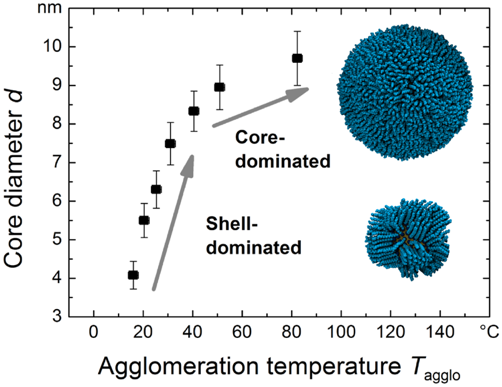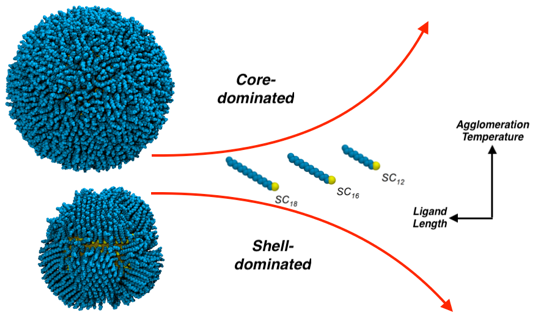Computational Materials Design of Excitonic Systems for Solar Energy Conversion
Researchers from the ARC Centre of Excellence in Exciton Science (ACEx) are using the Pawsey Supercomputing Centre's resources to study the properties of advanced molecular and nano materials in order to improve our ability to harness solar energy and to create energy-efficient lighting.
Area of science
Applied Science, Chemistry, Energy and Resources, Physical Sciences, Physics
Systems used
Magnus
Applications used
LAMMPS, VASP, SIESTA, Quantum Espresso, own codesThe Challenge
The ARC Centre of Excellence in Exciton Science seeks to understand how photons interact with advanced molecular and nano materials in order to improve the way that we harness and use light energy, with particular focus on new materials for harnessing the full spectrum of light and the development of novel hybrid materials that will improve our ability to manipulate light. This requires a joint experimental and theoretical effort, with access to high-power computing facilities that can support a broad computational materials discovery program as well as more focused studies of complex phenomena across a wide range of length and time scales, ranging from the energetics and dynamics of electrons, molecules and colloids, right up to whole device scales.
The Solution
Pawsey’s petascale capability allows us to carry out a wide range of challenging calculations that simply would not be practical with smaller facilities. This includes quantum mechanical calculations of excited electronic states in molecular chromophores, nanoparticles, and coupled systems, which can require TBs of memory; and large-scale molecular dynamics simulations of 100,000s of atoms for 100s of ns, in order to understand the forces that keep nanoparticle inks stable, or the complex processes involved in the nucleation and growth of thin crystalline films for harnessing solar energy. The efficient highly parallel processing available on the Magnus supercomputer at Pawsey is essential for carrying out these types of investigations
The Outcome
In 2018, we used Magnus to tackle a range of problems.
One of the problems that we focused on was understanding how tiny nanoparticles interact with one another in solution. Being able to make more concentrated nanoparticle inks and control how the particles will order when they crash out of solution is important for being able to make more efficient optoelectronic devices via scalable and low-waste printing processes. One particularly important class of nanoparticles are inorganic cores coated with a layer of hair-like molecules. This outer ligand layer is essential for keeping the particles from randomly aggregating in solution, but can affect the particle stability in ways that cannot be explained using existing theory. Using a combination of experimental and theoretical work, we demonstrated that surprising behaviour, such as non-linear changes in the agglomeration temperature and particle spacing, can be attributed to a transition from agglomeration driven by ordering of the ligand shell to agglomeration driven by attraction between the inorganic cores. This transition from shell- to core-dominated agglomeration also results in an inversion of the effect of ligand length on particle stability. The insights obtained from this work, published in ACS Nano and Langmuir, will help to create more stable excitonic inks in the future.
We also developed and applied new numerical algorithms for solving the Boltzmann equation, including spectral and Monte Carlo methods. This led to a number of new findings, with a paper submitted to the Journal of Computational Physics in collaboration with the University of Nottingham Ningbo China (and two further papers in preparation). This work is now being extended to study electron transport in a range of materials.
In addition, we used smaller amounts of computer time for several other studies: we developed codes for characterising the driving forces that determine the morphology of organic nanoparticles, which are being explored as a means to improve the efficiency of printable solar devices; we used grand-canonical Monte Carlo simulations to study halide demixing in metal halide perovskites, which is an important process that limits the efficiency of novel printable solar cells; and we used quantum mechanics calculations to study exciton energy transfer in organic light emitting diodes.

Ligand_length.png The transition from shell- to core-dominated agglomeration results in an inversion of the effect of ligand length on particle stability. Figure reproduced from Ref. 2
List of Publications
1. Kister, T.; Monego, D.; Mulvaney, P.; Widmer-Cooper, A.; Kraus, T. “Colloidal stability of apolar nanoparticles: The role of particle size and ligand shell structure” ACS Nano 2018, 12, 5969.
2. Monego, D.; Kister, T.; Kirkwood, N.; Mulvaney, P.; Widmer-Cooper, A.; Kraus, T. “Colloidal Stability of Apolar Nanoparticles: Role of Ligand Length” Langmuir 2018, 34, 12982.
3. Syed, N., Zavabeti, A., Ou, J.Z., Mohiuddin, M., Pillai, N., Carey, B.J., Zhang, B.Y., Datta, R.S., Jannat, A., Haque, F., Messalea, K.A., Xu, C., Russo, S.P., McConville, C.F., Daeneke, T., Kalantar-Zadeh, K. “Printing two-dimensional gallium phosphate out of liquid metal” Nature Communications 2018 9, art. no. 3618.
4. Ahmed, H., Rezk, A.R., Carey, B.J., Wang, Y., Mohiuddin, M., Berean, K.J., Russo, S.P., Kalantar-zadeh, K., Yeo, L.Y. “Ultrafast Acoustofluidic Exfoliation of Stratified Crystals” Advanced Materials 2018, 30, art. no. 1704756.
5. Lyskov, I., Etinski, M., Marian, C.M., Russo, S.P. “Exciton energy transfer in organic light emitting diodes with thermally activated delayed fluorescence dopants” Journal of Materials Chemistry C 2018, 6, 6860.







